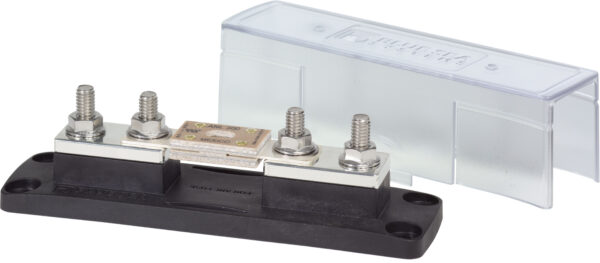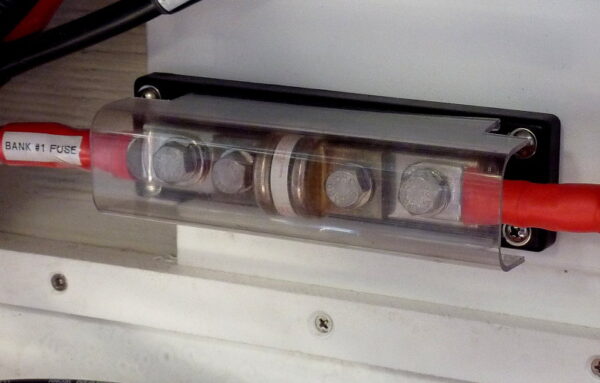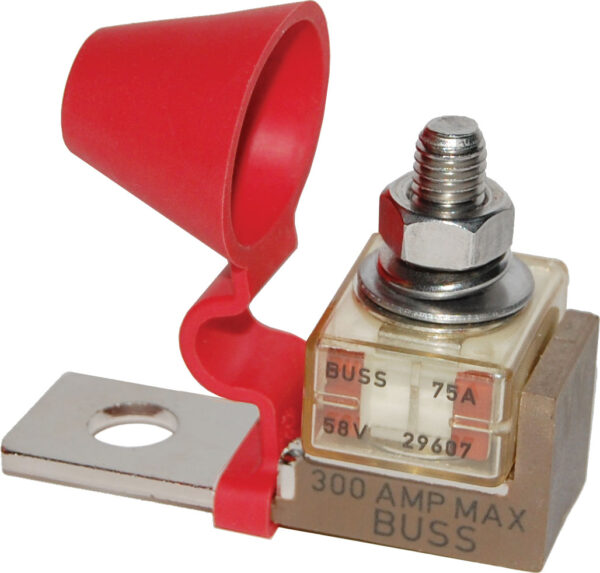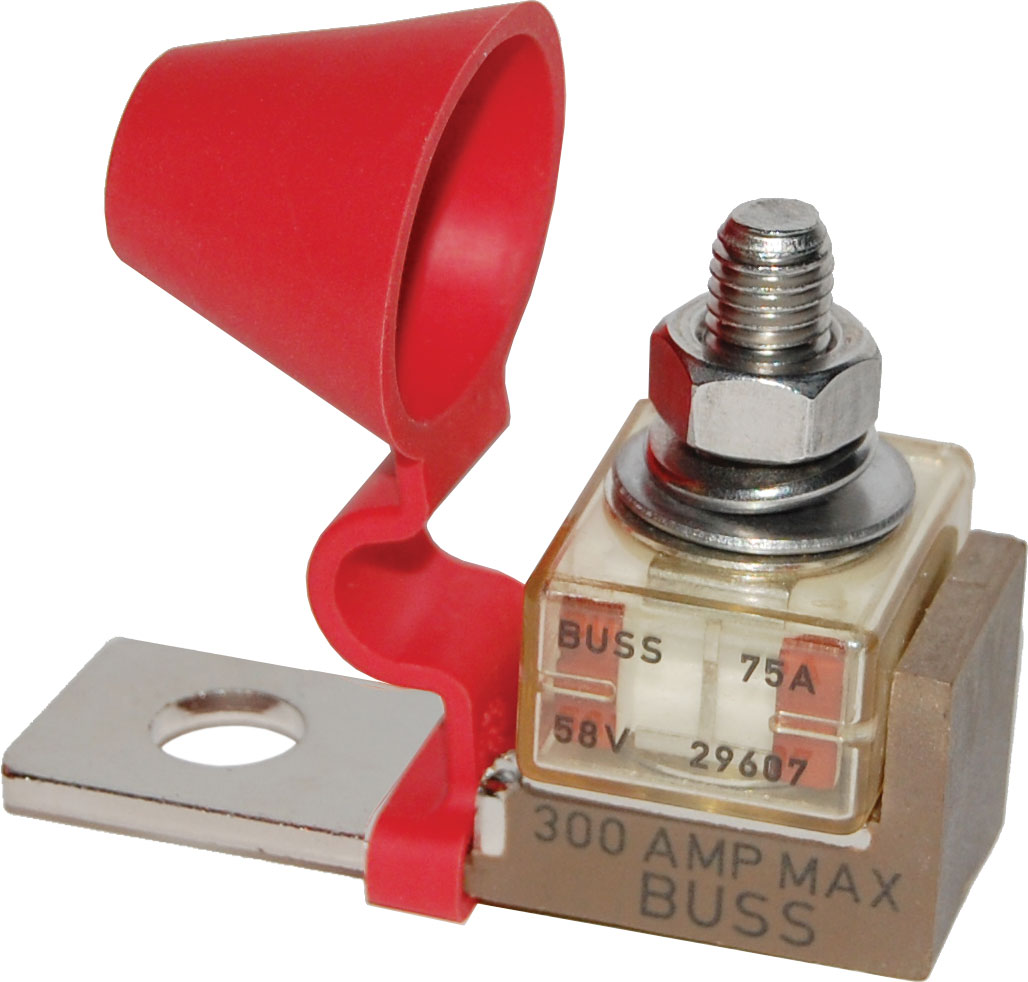I don't have an answer but might suggest that the "guy doing work" should have a pretty good idea of what you should have.
Here is some good info from Marine How To:
Bare Minimum Fuse Sizes
Let’s cut-to-the-chase on this. Below are the minimum bank fusing we prefer to see for any bank that could ever be called upon to start a motor. If your vessel has a 1/2/B switch both banks need to be capable of starting the engine.
B
are minimum fuse size for small diesel engines 8HP to 25HP = 250A
Bare minimum fuse size for medium diesel engines 25HP to 60HP = 300A
Above 60HP 75% of measured *inrush current as minimum fuse size.
*You will need a clamp meter such as a Fluke 376, or equivalent, to measure the
inrush.
If you follow the above guidelines, you will not suffer “nuisance trips” if fusing your starting bank.
If your engine is too large for a fuse put the entire length of the cranking conductor in a protective conduit or protective loom! Unprotected battery cables are a fire waiting to happen!
Selecting the Proper Type of Fuse:
Battery banks larger than 255Ah should be protected with fuses not breakers. The following types of fuses are suitable for main bank protection:
ANL
 CLASS T (preferred for Li-ion& large AGM Banks)
CLASS T (preferred for Li-ion& large AGM Banks)
 MRBF
MRBF

These fuses are available from Blue Sea Systems and other reputable sellers. They should however be “Ignition Protected” fuses if installed on a gasoline boat and Blue Sea Systems is the only one I know of offering ANL fuses with ignition or spark protection for ANL’s. Class T fuses are not
technically IP rated however they are fully encased in a metal body. Class T fuses have simply not been tested for IP rather than do not meet IP. In speaking with Blue Sea systems I was told they have no documented cases of an IP breach on any Class T fuses.
Remember, the main battery over current protection (OCP) or over current protection device (OCPD) is sized to protect the
wire. The main bank fuse is not there to protect the down-stream equipment. Those fuses would be located after the main bank protection fuse. This is often misunderstood.
You can always go smaller with OCP than the wires ampacity rating, but
ideally should not exceed the ampacity rating unless you are fusing the battery bank and the bank could potentially be called upon to crank a motor. The main bank fuses are there to prevent the wire from overheating, melting and starting a fire in a dead short situation. Generally speaking a fuse is sized to not exceed the maximum ampacity of the wire. In certain instances the ABYC allows for up to 150% of the chart below.
Battery Banks & Over-Current Protection A 300A (MRBF)Battery Terminal Mounted Fuse by Blue Sea Systems In this article we will discuss fuse selection, fuse types, wire ampacity, Amperage Interrupt Capacity (AIC) and even potentially unsafe ABYC “exceptions to the rules”. In short,
marinehowto.com








